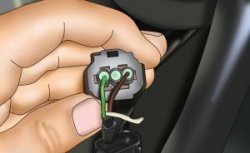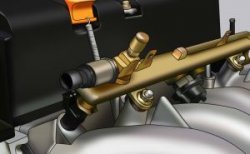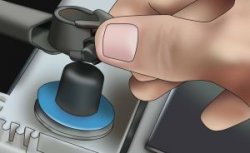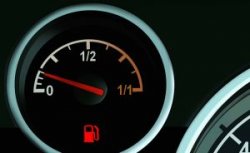1999-2010 Hyundai Kia Fuel Rail Pressure Sensor
Price list
Still could not find the Part? Contact us @ Find Exact Part in 24 Hours
Specification
| Brand | |
|---|---|
| MPN | 0281002909 |
| Year | 1999, 2000, 2001, 2002, 2003, 2004, 2005, 2006, 2007, 2008, 2009, 2010 |
| Make | |
| Model | Carens, Cerato, Santa, Sportage, Trajet, Tucson, XTREK |
| Trim | All |
| Engine | All |
| Fitment Type | Direct Replacement |
| Warranty | 1 Year |
| Surface Finish | High-quality |
| Part Number | 0281002405, 0281002522, 0281002788, 0281002867, 13537812345, 31401-27000, 31401-27001, 42567918, 42569152, 504229208, 6H42-9C968-AB, 6H429C968AB, 7701048994, 7701068387, 7701069617, 8029312, 81.294, 8200600206, 8200600208, STC4768, STC4769A |
| Condition | New |
Fit In Five Steps
How to replace a Hyundai Elantra Fuel Rail Pressure Sensor?
1.Verifying the condition of the fuel rail sensor
Listen to the engine operation for any cylinders not firing correctly and feel for any vibrations during engine operation. Shut the engine off and open the hood. Check for any wiring that may be broken or damaged around the fuel rail sensor.
2. Materials Needed
- Allen wrench set
- Boxed end wrenches
- Electrical cleaner
- Fuel hose quick disconnect kit
- Fuel resistant gloves
- Inch-pound torque wrench
- Lint-free cloth
- Protective clothing
- Ratchet with metric and standard sockets
- Small flat tip screwdriver
- Torque bit set
- Torque wrench
- Safety glasses
- Wheel Chocks
3. Replacing the fuel rail sensor
Park your vehicle on a flat, hard surface. Make sure that the transmission is in the park (for automatics) or in 1st gear (for manuals). Install a nine-volt battery saver into your cigarette lighter. This will keep your computer live and keep your settings currently in the vehicle. Open the vehicle’s hood to disconnect your battery. Take the ground cable off of the battery’s negative post disabling the power to the ignition system and fuel system. Remove the engine cover it there is on top of the engine.
Remove any brackets that may be in the way of the fuel rail sensor. Find the Schrader valve or test port on the fuel rail. Put on safety glasses and protective clothing. Place a small drip pan under the rail and place a towel over the port.
Using a small flat screwdriver, open the valve by pushing on the Schrader valve. This will bleed off the pressure in the fuel rail. Remove the harness from the fuel rail sensor. Remove the mounting hardware from the fuel rail sensor. Clean the fuel rail with a lint-free cloth. Clean the fuel rail sensor harness with electrical cleaner to remove any debris.
Install the new fuel rail sensor onto the fuel rail. Screw in the mounting hardware finger tight. Plug in the fuel rail sensor harness to the sensor. Install any brackets that you had to remove to get the old sensor off.
4. Checking for leaks
Reconnect the ground cable back onto the battery’s negative post. Remove the nine-volt battery saver from the cigarette lighter. Tighten the battery clamp up tight. Ensure that the connection is good.
Turn the ignition key on. Listen for the fuel pump to activate and turn off the ignition after the fuel pump stops making noise. Use a combustible gas detector. Check all of the connections for any leaks and sniff the air for any fuel odors. Remove the wheel chocks. Put these aside.
5. Test drive the vehicle
Drive the vehicle around the block. During the test, listen for any engine cylinders not firing correctly and feel for any vibrations. Monitor the dash for the fuel level and for any engine light to appear.
If your engine light comes on after replacing the fuel rail sensor, then there may be a further diagnosis of the fuel system needed or a possible electrical issue within the fuel system. If you have any questions about the process, be sure to Ask a Mechanic for some quick, helpful advice.

$22.32











Got something to discuss?